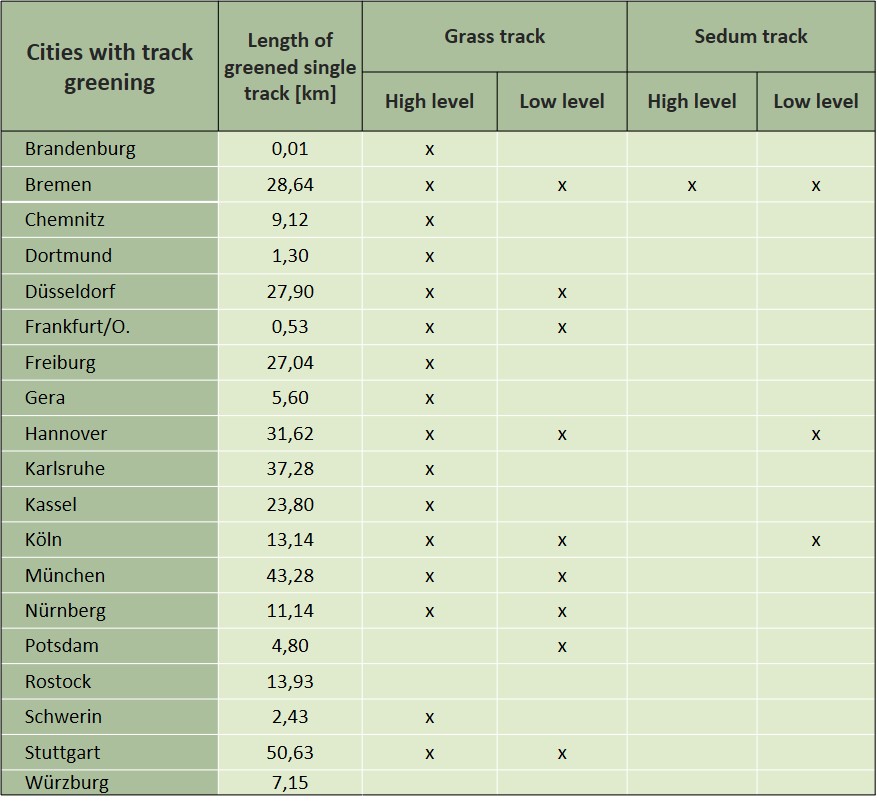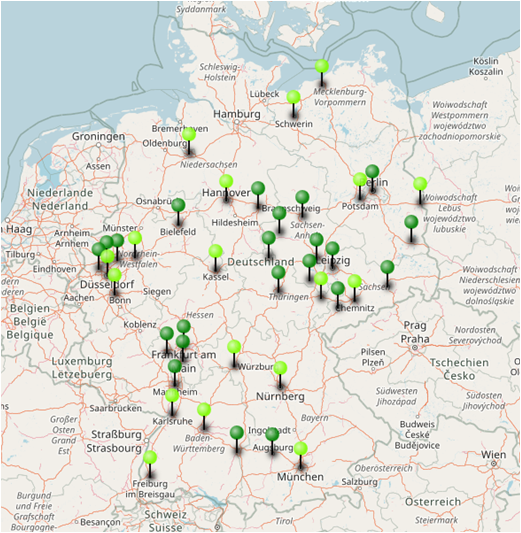History of track greening & trend
As early as the beginning of the 20th century, special railway structures were built for trams and thus enabled the first greening of these tracks with grass (Giese 1916, Verkehrstechnische Woche 10). Due to increasing track construction problems, greening was not built any further. With the growing environmental awareness about 30 years ago, the first tram companies began to develop their own track greening systems. Since then there has been an increasing trend with an average of 20 km growth per year in Germany. This applies both to the new construction of tracks and the reconstruction of greenery on existing tracks. Ballasted track as well as slab track are suitable for greening.
Selection of German cities with track greening, their greening systems and design forms (high level greening: greening up to rail head, low level greening: greening up to about rail foot) (status Nov 2017, survey green track network)

In 2022, more than 676 km of tram tracks in Germany were covered in green. This corresponds to an area of over 169 ha or 1.69 million m². Of this, approx. 90 % is covered with grass and 10 % with sedum. The trend is also increasing worldwide. Track vegetation can be found, for example, in Belgium (Brussels), Bulgaria (Sofia), China (Jiangsu Province, Suzhou city), France (Paris, Bordeaux, Nantes, Anges, Lyon, Montpellier), Ireland (Dublin), Austria (Vienna, Linz, Graz), Spain (Barcelona, Seville), Sweden (Gothenburg), Switzerland (zurich), the Czech Republic (Prague, Brno the UK (Birmingham, Manchester).
Please click on the map for a selection of data and photos on track greening via open street map


